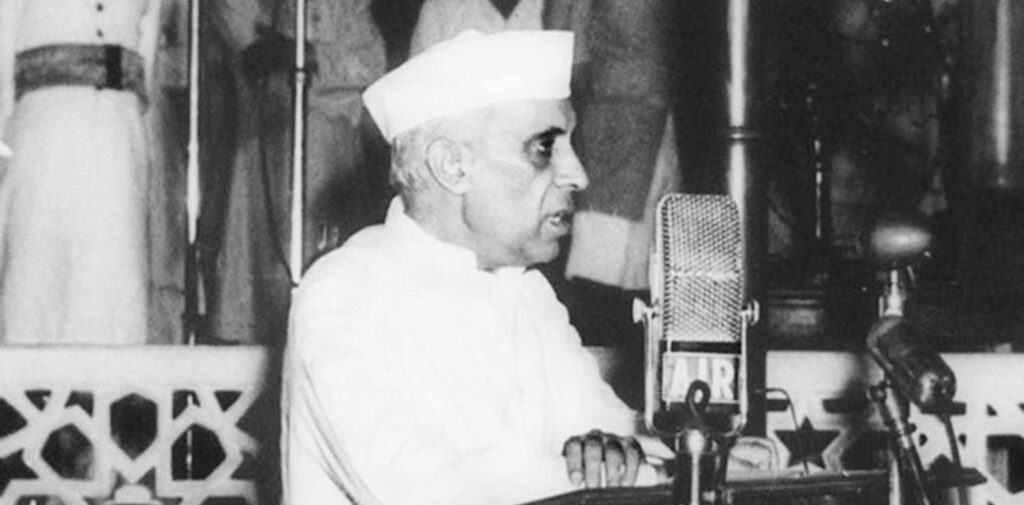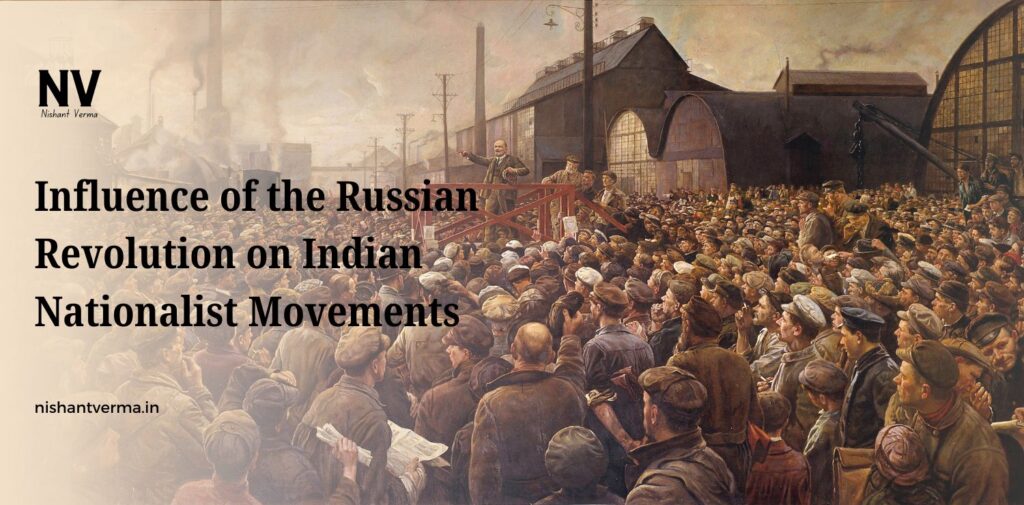The Russian Revolution of 1917 was one of the most significant events of the 20th century, bringing radical political, social, and economic changes to Russia and inspiring movements around the world. One of the countries profoundly influenced by this revolution was India, where the struggle for independence from British colonial rule was gaining momentum. The Russian Revolution offered new ideas of governance, social justice, and revolution, which inspired Indian leaders and activists to rethink their strategies in the fight for freedom.
In this article, we will explore Influence of the Russian Revolution on Indian Nationalist Movements, shaped the political landscape, and inspired many Indian leaders to adopt new methods of resistance against British rule.
What Was the Russian Revolution?
The Russian Revolution was a series of events that led to the overthrow of the Russian monarchy and the establishment of a communist government under the leadership of the Bolshevik Party, headed by Vladimir Lenin. The revolution, which took place in 1917, was driven by the widespread dissatisfaction of the working class and peasants with the existing autocratic system. It resulted in the creation of the Soviet Union, a socialist state that would have a major impact on world politics.
The revolution promoted ideas of equality, the rights of workers, land reforms, and the redistribution of wealth. These ideas were radical and challenged the existing social and political systems, influencing movements globally, including in colonies like India.

How the Russian Revolution Inspired Indian Nationalism
India, under British colonial rule, was grappling with issues of inequality, poverty, and political oppression. Many Indian leaders, particularly those associated with the Indian National Congress, had been demanding reforms and self-rule through peaceful means, such as petitions and negotiations. However, the success of the Russian Revolution showed them that more radical methods of resistance could also be effective.
The revolution inspired Indian nationalists to adopt more militant and radical approaches in their struggle for independence. The idea of a workers’ and peasants’ revolution, which was central to the Russian movement, struck a chord with many Indians, especially those from the rural and working-class backgrounds. They saw it as a way to fight against both British colonial rule and the oppressive social structures within Indian society itself.
Influence on Indian Leaders and Movements
Several key Indian leaders were influenced by the Russian Revolution and its ideas, especially the notion of social and economic justice for the common people. They realized that India’s struggle for freedom should not only be about political independence but also about the redistribution of land, wealth, and power. This was a time when ideas of socialism and communism began to enter Indian political discourse.
1. Subhas Chandra Bose and the Radical Nationalist Approach
Subhas Chandra Bose, one of India’s most important freedom fighters, was deeply influenced by the Russian Revolution. He believed that India’s struggle for independence required more radical and direct action. While Bose had been a prominent member of the Indian National Congress, he grew increasingly frustrated with its moderate approach to independence.
After the Russian Revolution, Bose advocated for a more forceful strategy to confront the British. He was particularly attracted to the idea of a mass uprising, similar to the Bolshevik revolution, where the working class and peasants would rise against the colonial rulers. Bose’s thoughts evolved toward a more revolutionary path, and he eventually sought international support for Indian independence from countries like Germany and Japan during World War II.
2. The Communist Party of India
The Russian Revolution also had a direct impact on the formation of the Communist Party of India (CPI) in 1925. The leaders of this party were inspired by the Bolshevik model of revolution and believed that India’s freedom struggle needed to incorporate socialist ideals. They argued that in addition to political independence from Britain, India also needed a social and economic revolution to address the exploitation of workers, farmers, and marginalized communities.
The Communist Party focused on the rights of the working class and peasants, who were heavily exploited by both British imperialism and traditional Indian social structures. The CPI also believed that the fight for independence should be a struggle for social equality, advocating for land reforms and better wages for workers.
The Russian Revolution provided a theoretical foundation for these ideas, and the CPI used its influence to unite various workers’ unions and peasants in protests against both the British and Indian elites. The Bolshevik ideas also helped shift the focus of the Indian National Congress from simply demanding reforms to pushing for more radical political and economic changes.

3. Jawaharlal Nehru’s Socialist Leanings
Jawaharlal Nehru, who later became India’s first prime minister, was also influenced by the Russian Revolution. While Nehru initially followed the moderate path of the Congress, he began to lean towards socialism after his exposure to the revolutionary ideas of Lenin and the Bolsheviks. Nehru’s exposure to the Russian Revolution deepened his understanding of the need for economic transformation in India alongside political independence.
Nehru believed that India’s future could not be built upon the old structures of feudalism and British imperialism. He advocated for land reforms, the redistribution of wealth, and the establishment of a strong, centralized economy. In many ways, Nehru’s vision of an independent India was inspired by the ideas of economic equality that had been central to the Russian Revolution.
Nehru’s socialist ideas led to significant reforms after India gained independence, such as the nationalization of key industries and the establishment of public sector enterprises.
4. The Peasant and Worker Movements
The Russian Revolution also influenced the rise of peasant and worker movements in India. The ideas of land reforms and workers’ rights found strong support in rural and industrial areas, where many Indians were suffering under oppressive economic conditions. The struggle for land rights and better wages became central to the Indian independence movement, with many leaders advocating for these changes.
In the 1920s and 1930s, various peasant movements and labor unions were formed across India, inspired by the Russian example. These movements gained momentum in the 1930s, with workers organizing strikes and peasants fighting for land reforms. These movements further radicalized the Indian struggle for independence and pushed the Indian National Congress to take a more left-wing approach, focusing on social and economic justice.

The Russian Revolution and the Quit India Movement
The Russian Revolution also influenced the Quit India Movement of 1942, which was one of the most significant milestones in India’s fight for independence. The movement was a call for immediate British withdrawal from India, led by Mahatma Gandhi. While Gandhi’s approach remained non-violent, many of the younger, more radical leaders, including Bose, saw the Russian Revolution as a model for mass resistance.
The Quit India Movement was a response to the British failure to grant India greater autonomy during World War II. The movement saw widespread participation from Indians across the country, and it was fueled by the desire to free India not just from British rule but from the existing social and economic inequalities. Many of these ideals were shaped by the socialist and revolutionary ideas of the Russian Revolution.
Conclusion: Influence of the Russian Revolution
The Russian Revolution of 1917 had a profound influence on the Indian nationalist movement. It introduced radical ideas about social justice, workers’ rights, and revolution that resonated with many Indian leaders and activists. While the moderate approach of the Indian National Congress dominated the early stages of the independence struggle, the Russian Revolution inspired many leaders, including Subhas Chandra Bose, Jawaharlal Nehru, and the CPI, to adopt more radical and revolutionary approaches to independence.
The ideas of land redistribution, workers’ rights, and economic equality gained popularity and became central to India’s freedom struggle. The Russian Revolution showed that colonial powers could be overthrown through revolution and mass uprisings, influencing how the Indian independence movement would evolve in the coming decades.
In the end, the influence of the Russian Revolution helped shape the political and social landscape of India and contributed to the eventual success of the country’s fight for independence from British rule.




